Back to ABOUT
PLAYHOUSE HISTORY
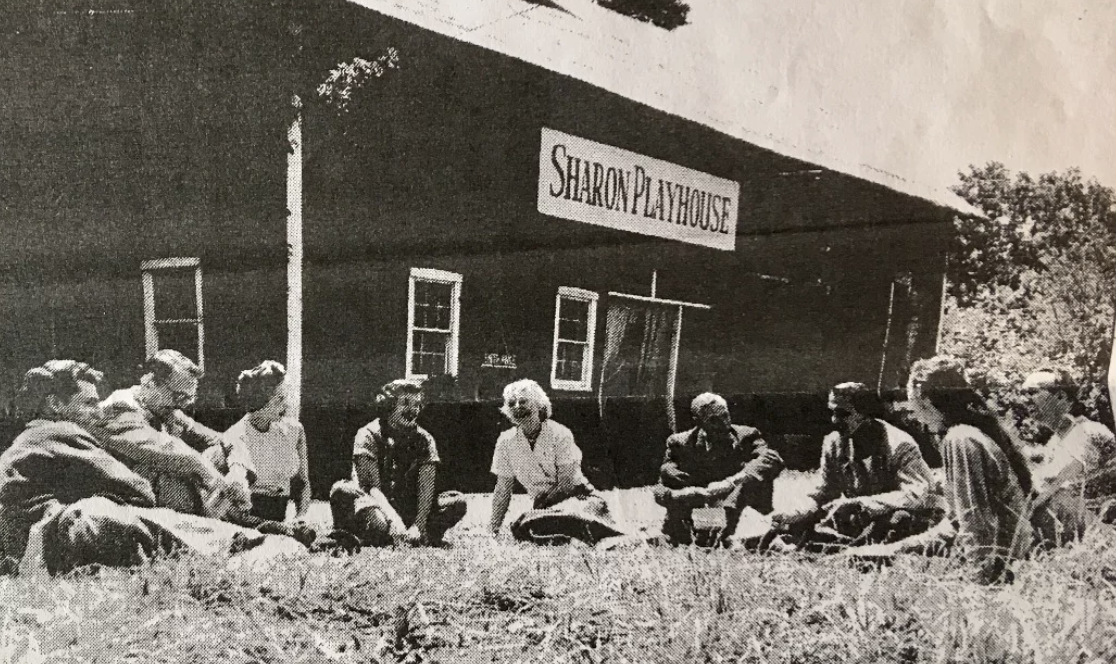



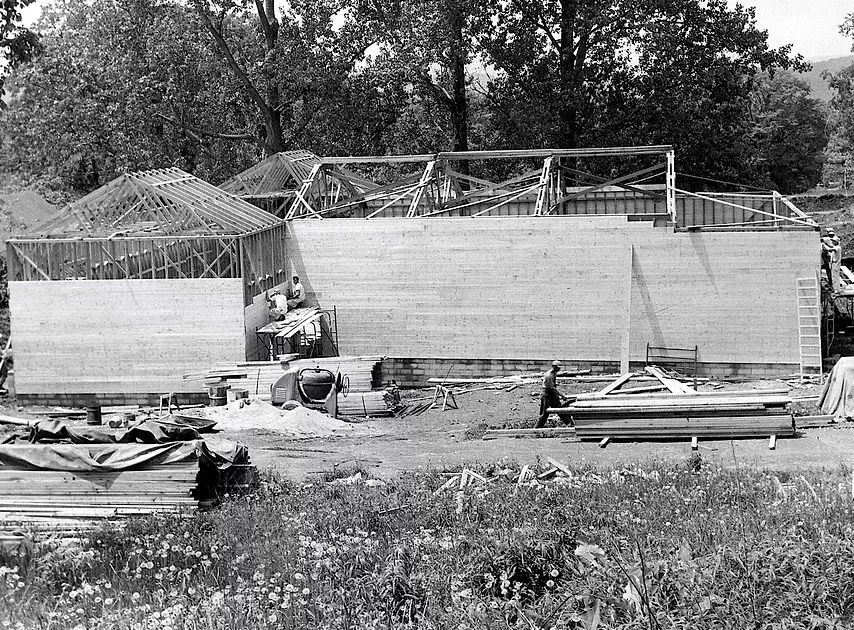

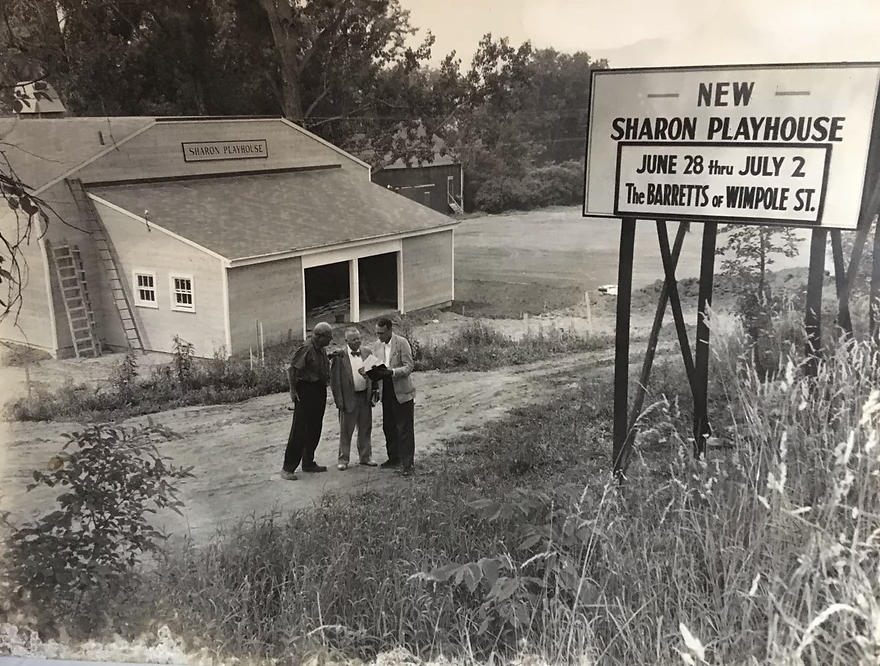
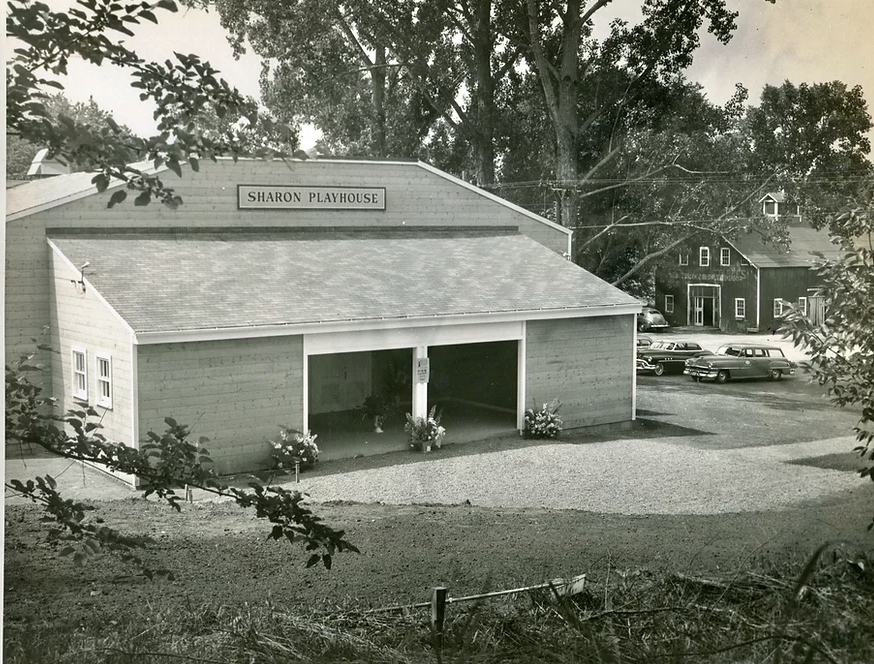


BACKGROUND & TIMELINE
In the late 1920s and 1930s, a group of Sharon residents formed a play-reading group - at first for their own pleasure and then as they hoped, for their friends' and neighbors' entertainment. People in the area seemed to appreciate the idea of a local place where they could hear the words of famous playwrights interpreted by talented readers
Fast forward to the ‘40’s where -- of all summer theaters sprouting up --none was quite as thrilling as the Pitchfork Playhouse. The group there was an outgrowth of the “Jesters,” a dramatic organization of Hartford's Trinity College. George Dessart of Trinity was the producer, while the stage direction was handled by Don Craig, both of the Jesters.
In the summer of 1947, the company decided they wanted their own theater. They convinced the Sharon Inn that a playhouse would be just the thing to revive its sagging business. In late July, the group obtained the use of the 100-year-old carriage stable at the Sharon Inn and working 18-22 hour days, converted it into a highly workable attractive theater. Ten weeks later, the Playhouse produced its first show: "The Male Animal," by James Thurber, who came to see the show. The Company presented a new play each week. "Dear Ruth," “They Knew What They Wanted," "All My Sons" and "Arms and the Man,” were some of the titles. The Pitchfork Playhouse at the Sharon Inn was up and running.
Walter Winburn, a stage-struck young man aided by Helen Kingstead and her husband Gerald Cornell, an acting couple with a long Broadway history who made their summer home in Sharon joined management. It was Helen who was responsible for changing the name to The Sharon Playhouse. They rented the barn theater from the Sharon Inn Corporation for one dollar a year.
In 1950 and with a growing audience, the well-known mystery writer Judson Phillips, came on board and created a small regional Equity theater. In 1951 he was joined by Guernsey LePelley, a brilliant political cartoonist for The Christian Science Monitor.
But after four years Judson confronted a dilemma. With only 175 seats there was no way to meet the costs -- even if every seat was occupied every night. A bigger theater was needed. Providentially, The Sharon Inn closed and the buildings and grounds were given to Judson and his group. So in 1955 Phillips, and LePelley enlisted the architect Frank Poehler to design the new building. The original barn theatre was converted to a gallery, moved to 49 Amenia Road where today’s Playhouse stands.
The first seven weeks of that season were wildly successful. But in August came an unforeseen setback. Hurricanes Connie and Diane doubled up to deal Northwest Connecticut a wallop. There were 70 deaths, thousands of injuries, and hundreds of millions in property damage. Audience towns like Torrington and Winstead were crippled.
The following summer the State still has not recovered from the floods. Money was desperately needed to keep the theater going. It became apparent that there would have to be new incentives for donations The Sharon Creative Arts Foundation (SCAF) was formed, a tax-exempt corporation. This meant that people who gave money could take their gift as an income tax deduction and SCAF became the producing entity and remained so unto the 80’s.
During the 60's and 70's the Playhouse was kept "in the black" by the dedication of two Sharon couples - Dr Walter Fairservis and his wife Janno, and William Landis and his wife Elizabeth. Then, after a decade of prosperity, The Sharon Playhouse lost continuity. Season after season outside management and directorial companies came and went. The Playhouse was often dark. In 1989, Bettie Snyder was the president of SCAF. Bettie brought in the Broadway actor/director, Ray Roderick to direct a production of THE MUSIC MAN casting both professional and local talent. The result was so inspiring that Roderick and Sarah Combs got together with a group of passionate volunteers to create their own tri-state regional theater in Pine Plains, NY using this same formula. This new theater was named “Tri-State Center for the Arts” commonly known as "TriArts" with Roderick as Artistic Director and Combs as Board President. Michael Berkeley joined as Resident Musical Director the following year.
Starting under a big tent, and later, in the Carvel Warehouse, TriArts produced many successful musicals, blending community actors with professional directors, designers, musicians, and performers. Broadway producer Kevin McCollum – today the Tony winning producer of “In the Heights” “Avenue Q” and “Rent” served as Executive Director for two seasons. Casey Nicholaw who won Tonys for directing “The Drowsy Chaperone” “The Book of Mormon” “Aladdin'' and “Something Rotten among others, cut his choreographing teeth at TriArts that season.
In the late 80's into the early 90's the Playhouse was rented to outside producers. The theatre went dark again from 1991-1994 when Clockwork Tower from Manhattan bought it and renamed it Sharon Stage.
In 1995 a new group led by Michael Gill, an independent producer, acquired management. During the next two years, heavy hitters from Broadway joined the Board, including members from the companies of “Miss Saigon” “Les Misérables” and “Phantom of the Opera.” The Jujamcyn organization, which was refurbishing the Virginia Theatre on Broadway, offered Gill theater seats they were removing. Those seats remain in the Playhouse to this day.
The theatre once again went dark in 1997. In 1998 the Westchester based Yorktown Theater Co headed by Kevin J. Kearins leased the theatre to produce a five-show musical season.
In 1999, spearheaded by then-President of the Board Lori Belter, the decision was made to move the Playhouse back to Sharon, CT. A 3-year capital campaign was successfully undertaken under the direction of Pat Best and Bill Suter to raise the funds to purchase what is now the Playhouse campus. A generous grant from the state of Connecticut through the Department of Economic and Community Development (DECD) helped to complete the funding.
The first season in The Sharon Playhouse with Gordon Heyworth and Bill Landis – both from SCAF--as Theatre Managers, saw productions of “Grease”, “Guys and Dolls'' and “Imagine That.” Michael Berkeley became Artistic Director at the new location, working with Executive Director Pamela Chassin. Pat Best assumed the Presidency of the Board.
In 2003, thanks to the generosity of Scott and Roxanne Bok, and with Stephen Belter, offering his building contractor skills at cost, The Bok Gallery was completed, providing year-round rehearsal, performance, workshop, and office space.
In addition to the summer theater musicals on the main stage, a Young Playwrights Festival, and youth theatre programs for children of all ages were added. Michael Berkeley also created the "Diva" series, an annual, original musical revue, involving as many as 50 women from the region, which became one of the most highly anticipated events of each season. The Bryan L. Knapp New Works Series, special events, and workshops were launched in the Bok Gallery, offering year-round programming.
Over the years, TriArts was the recipient of critical acclaim and awards for its productions. It also produced several original works, including “Imagine That,” “Off the Wall,” and “Dirty Doings in Deadwood,” by Berkeley. Also “Rip Van Winkle” and “I Love a Piano,” by Berkeley along with Roderick. Most of the above shows have been licensed and are being performed around the world.
In 2006 with the retirement of Pamela Chassin, Alice Bemand joined as Executive Director. A few years later, John Simpkins, an adjunct professor of musical theater at NYU and a regular director of some of the season’s productions becomes Artistic Director. In his first year, Simpkins, created a Collegiate Company of actors who were studying musical theater at universities and colleges across the states. These young aspiring thespians received college credits for spending the summer at TriArts and participating in all the shows. Late night cabarets on the newly renovated patio, showcased the talents of these young performers after the curtain on weekend shows.
In 2011, Justin Ball took over as the Managing Director. During the tenure of Simpkins and Ball four notable things occurred.
The Theater redefined its mission and crafted a new statement position it as a “teaching theater.”
The Board voted to rename the organization "The Sharon Playhouse" to make the company and the venue one and the same.
The Playhouse added an occasional play—comedy or drama – to the season.
While a noticeable percentage of local performers continued to appear in shows, the Playhouse increased its Equity contract assuring more seasoned career professionals in key roles. This resulted in a new profile for the theater -- more polished work with higher production values.
To the Board and more demanding members of the community, this was gratifying. But it was also a double-edged sword. Equity performers require high end, private housing, transportation, preferential treatment, high salaries--a lot higher than the theater was used to paying. The Playhouse struggled to meet these requirements and new costs.
Then, the beginning of the 2016 season John Simpkins – who had left NYU to teach musical theater at Penn State – is promoted to running the whole of Penn State’s prodigious musical theater department. The needs of these two jobs, to say nothing of the commute, make his dual responsibilities impossible to manage and he returns to academia full time.
Justin Ball also moves on and a new team of George Quick and Johnson Henshaw – Managing and Artistic Director respectively --join to run the Playhouse for the 2016 season. They abandoned the formula of casting locals alongside professionals and opt for a season of plays that are unfamiliar, challenging, dystopian. The season is not successful. The Playhouse goes deeper into the red.
With the Playhouse facing significant financial and attendance shortfalls, the Board hires the two-man team of 22Q Entertainment – a producing company specializing in turn-around situations. Robert Levinstein is the theater management talent and Alan M-L Wager takes the artistic lead. The team is challenged to break even the first year – a goal that had been elusive. They open the season with a splendid production of “Anything Goes.” returning to the formula of combining professional and local talent. The reviews are raves, the word-of-mouth spreads. The season breaks even.
In 2020 Michael Kevin Baldwin joins the management team as Associate Artistic Director/Director of Education. He turns the Playhouses’ moribund education program into a thriving entity with spring/fall/winter classes for young people and adults, and Youth Theater shows featuring kids from ages 5 to 18, presented on the Playhouse Mainstage. This education arm becomes a robust revenue stream and fodder for an enhanced push for education grants.
Then Covid hit. Ambitious plans for the 2020 season were scuttled. In an effort to provide the community with some entertainment during this frightening and isolating time, the Playhouse constructed an outdoor stage and partnering with Robin Hood Radio – a local public radio station -- present weekly cabarets people could watch from the safety of their cars and listen to through the radio, instead of clapping, the audience honked their appreciation. The outdoor stage was put up again the following year. At this point the audience, feeling the outdoors provided safety, sat in chairs in the parking lot to see these shows.
In November of 2021, the 22Q Team, with little warning, resigned and returned to their home state of California. While they had been a part of the planning for 2022, they were not around to see it through. Michael Baldwin and Business Manager Wendy Prause were the only staff members. With seven months until the season opened, the Board decided to seek interim help while taking time to find the right replacement management.
Justin Boccitto, who was familiar with the Playhouse having choreographed “Anything Goes,” plus choreographed and starred in the following season’s production of “Crazy for You,” offered to join as Interim Artistic Director. Sarah Cuoco, a part time teaching artist with Playhouse, was hired full time to assist Michael Baldwin with the Education Program and free him up to give more time to Playhouse artistic and general management. Savannah Stevens, a parent, community member, Playhouse fan and accomplished lawyer, offered to take on some of the administrative duties of a Managing Director. The staff now numbered 5.
2022 productions broke records all around.
It began in the Bok Gallery with readings – to sold out audiences—of two new plays featuring actors like Gretchen Mol, Lauren Ambrose and Tim Blake Nelson “Guys and Dolls'' which opened the season on the Mainstage, was the highest grossing show ever done since the Playhouse started keeping records. “Shear Madness' ' over-achieved the projected income in multiples. “Raisin in the Sun '' which was done in the theater, with the audience seated on the stage surrounding the set as if they were right in the play’s living room, sold out every performance in its entire run.
Following an exhaustive 6-month search, the Playhouse found a new Managing Director, Rodney Christensen joined on November 1, of 2022. Two months after, in January 2023, Carl Andress was brought on as Artistic Director. With Christensen, Andress, Baldwin, Cuoco, and Prause finally completing the staff, the Playhouse continued a successful season in 2023 to more box office records, as well as 15 Berkshire Theatre Critic Award nominations, taking home Outstanding Musical Production for “Something Rotten”.
Back to ABOUT
